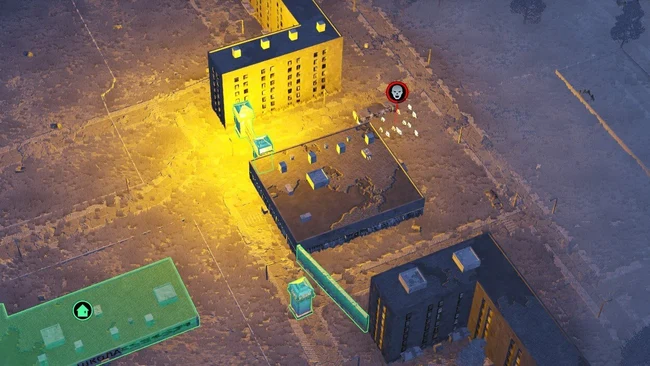Table of Contents Show
Infection Free Zone Food Production Calculations
Your people starve and you don’t know what to do to keep them fed? Check these calculations, but don’t stick to minimal numbers.
Calculations made on Beta 0.24.4.17 8, knowing my luck developer will change something with next hotifix but until that… let’s try not to die by starvation. Calculations made for neutral morale because it’s may be hard to provide houses for 200 survivors to keep +40% efficiency bonus.
How is food produced (cycles)
Food is produced in cycles so I based calculations on cycle time. Final cycle time is calculated according to the formula (base cycle time) / (number of workers) so here’s a list of base cycle times for food production.
- Farm (fertilizer doesn’t affect time) – 4 or 9 grain
1 worker – 40h - Kitchen – 2 grain > 4 portions, 3 meat > 5 portions (with technology increasing kitchen effectivness)
1 worker – 20h grain (16h), 16h meat (12h 48m) - Barn – 1 grain > 2 meat + 1 fertilizer
1 worker – 14h - Cannery – 2 portions > 3 cans
1 worker – 4h
Survivors leaves shelters/houses at sunrise and work till 1h before sunset so their work time depends on:
- season
- distance between shelter/house and work place
- distance between work place and warehouse (they don’t produce while they’re resuppling)
Let’s assume 9h work day as average. As farm and cannery are temperature dependent it’s wise to have more farm and/or more people in cannery than minimal calculated below to stock up for the winter.
For 100 people we need 25 food per day, calculations are made with excess (slightly).
Food production based on cannery
Requires fully operational cannery, in case of cold production described below will be lowered and unsufficient. Assign more workers to make stock for cold days.
- Building – cycles required – total cycles time with 1 worker /// (with technology increasing kitchen effectivness)
- Cannery – 9 cycles – 36h
- Kitchen – 5 cycles with grain – 100h | 4 cycles with meat – 64h meat /// 80h (grain) | 51,2h (meat)
- Farm – 3 cycles without fertilizer or 2 cycles with fertilizer – 120h or 80h
- Barn – 6 cycles – 84h
To fit it into 9h:
- Cannery – 36h / 4 workers = 9h
- Kitchen – 80h (grain) / 9 workers = 8,9h | 48h (meat ) / 6 workers = 8h /// 64h (grain) / 8 workers = 8h | 38,4h / 5 workers = 7,68h
- Farm – 120h (-fertilizer) / 14 workers = 8,6h | 80h (+fertilizer) / 10 workers = 8h
- Barn – 84h / 10 workers = 8,4h
Foor production without cannery
As nobody want to starve because cannery froze let’s check what we need to supply 100 people with food without cannery. Most efficient food production is meat as it has shorter cycle time and bigger rations production than food from grain.
- Kitchen – 5 cycles (meat) – 80h / 9 workers = 8,9h /// with technology increasing kitchen effectivness – 64h / 8 workers = 8h
- Barn – 8 cycles – 112h / 13 workers = 8,6h
- Farm – 2 cycles (-fertilizer) – 40h / 5 workers = 8h | 1 cycle (+fertilizer) – 20h / 3 workers = 6,7h.
Final
Now you have base knowledge about food production for 100 people, but keep in mind that farms are fully productive like half of the time so it’s wise to have them more, even twice that was calculated. It’s base for whole food production so you don’t want to run out of it while you are sieged by infected and unable to sent squad for scavenging/expedition.
Just remember, those are MINIMAL CALCULATIONS. If something goes wrong your people will start to starve. If you have long distances between shelter/house, work place and warehouse you may not hit 9h production. Sticking to minimal numbers may work only if you have a lot of food around, otherwise you will regret that you played “by minimal”.
Now go start chopping trees because you gonna ran out of wood. Iron will be also useful.
